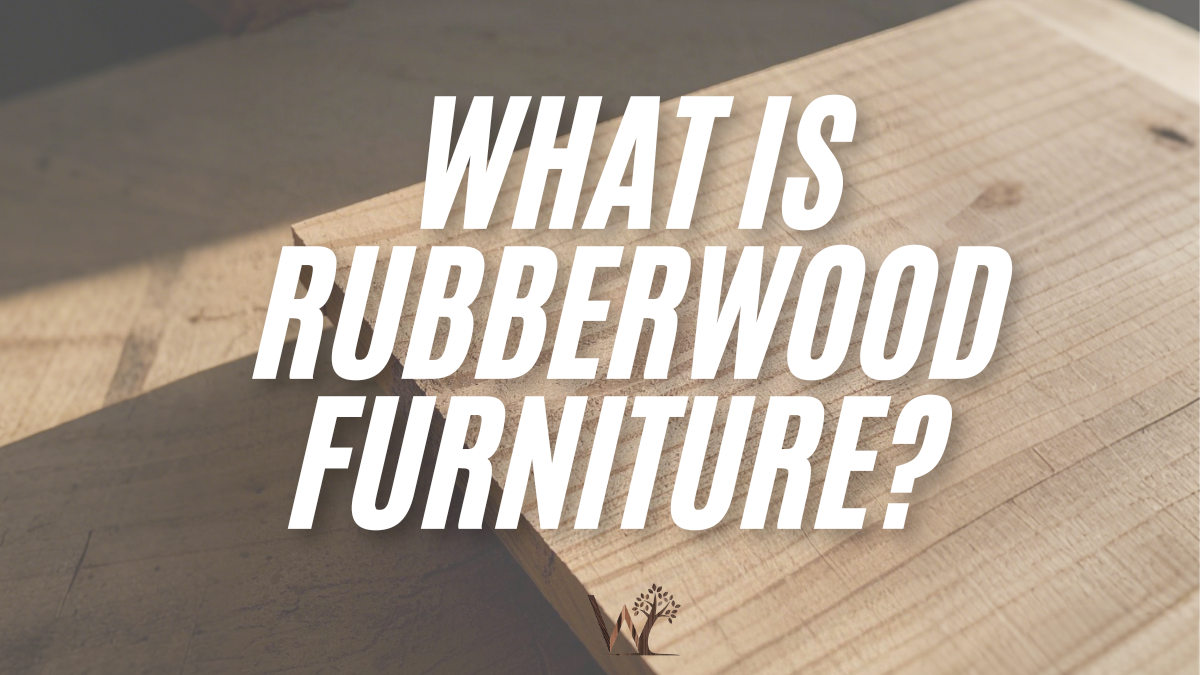Wood furniture adds warmth and charm to any space, but keeping it looking pristine requires more than just an occasional wipe-down. Dust, spills, and everyday wear can dull its natural beauty, making it lose its luster over time. The good news? With the right approach, cleaning wood furniture can be simple and effective.
Proper care not only enhances appearance but also extends the life of your cherished pieces. By using the right techniques and avoiding common mistakes, you can protect against damage, preserve the finish, and maintain that fresh, polished look. Ready to bring your wood furniture back to life? Let’s get started!
I. Understanding Your Wood Furniture
Different Types of Wood Finishes and Their Cleaning Needs
Understanding the type of wood finish on your furniture is crucial for effective maintenance. Each finish requires a unique approach to ensure it stays in top condition without risking damage.
- Painted: Requires gentle cleaning with mild soap and water to prevent peeling and fading. Avoid harsh chemicals that could strip the paint.
- Stained: Needs a dedicated wood cleaner to protect the stain and prevent discoloration over time.
- Laminated: Best cleaned with a damp cloth and mild detergent; harsh chemicals can damage the surface.
- Unfinished: Demands extra care with regular dusting and occasional conditioning using wood-safe oils to prevent drying and cracking.
Maintaining your furniture’s finish properly will help protect wood furniture from daily wear and tear while preserving its natural beauty.
II. Essential Cleaning Supplies for Wood Furniture
Keeping wood furniture looking its best starts with having the right tools and cleaning products. Using the wrong supplies can lead to scratches, fading, and long-term damage.
Recommended Tools
- Microfiber cloths: Perfect for dusting wood furniture without leaving behind scratches or streaks.
- Soft brushes: Ideal for reaching crevices and intricate wood carvings without damaging the surface.
- Wood-safe dusters: Help capture dust efficiently without scattering it back onto the surface.
Equipping yourself with the right tools makes routine cleaning more effective and helps in maintaining wood furniture in pristine condition.
Safe Cleaning Products
Choosing the right cleaning products ensures your wood furniture stays protected and free from buildup.
- Natural cleaners: Vinegar and olive oil are excellent for eco-friendly wood cleaning, offering a safe alternative to chemical-laden solutions.
- Commercial wood cleaners: Select products specifically formulated for wood furniture to avoid damage from harsh chemicals.
- Essential oils: Used for cleaning furniture with essential oils, adding a fresh scent while nourishing the wood.
Using the best way to clean wood furniture involves selecting products that are both effective and gentle on the finish.
DIY Cleaning Solutions
If you prefer a more natural approach, DIY wood furniture cleaning solutions can be both cost-effective and safe.
- Vinegar and water solution: A gentle cleaner for regular maintenance and removing sticky residue from wood.
- Baking soda paste: Works wonders for removing water rings from wood and lifting stubborn stains.
- Olive oil and lemon: A natural homemade wood polish that restores shine and keeps the surface conditioned.
Opting for DIY solutions helps in deep cleaning wood furniture while avoiding exposure to potentially harmful chemicals.
III. Routine Dusting and Maintenance
Regular upkeep is essential to maintain the beauty and longevity of your wood furniture. Let’s delve into effective dusting practices and maintenance tips.
How Often Should You Dust Wood Furniture?
- Weekly Dusting: Dust your wood furniture at least once a week to prevent the accumulation of dirt and grime. Regular dusting maintains the furniture’s cleanliness and hinders the accumulation of dirt and grime, potentially harmful to the wood’s surface over time.
- Monthly Deep Cleaning: Perform a more thorough cleaning monthly to address any areas that regular dusting might miss. This routine helps in maintaining wood furniture and ensures it remains in excellent condition for years.
Best Dusting Techniques
- Direction Matters: Always dust in the direction of the wood grain. This method prevents scratches and maintains the integrity of the wood surface.
- Proper Tools: Use a soft, lint-free cloth, such as microfiber, to effectively capture dust without causing damage. Avoid using abrasive materials that can scratch the finish.
Using Wood-Friendly Dusting Sprays
- Choose Wisely: Opt for non-abrasive, wax-free dusting sprays specifically formulated for wood surfaces. Avoid products containing silicone, as they can cause buildup and attract more dust over time.
- Application Tips: Spray the product onto your cloth rather than directly onto the furniture to prevent oversaturation and potential damage. This approach ensures even distribution and minimizes the risk of staining.
IV. Deep Cleaning Your Wood Furniture
Occasionally, your wood furniture will require more than just routine dusting. Deep cleaning helps remove embedded dirt and rejuvenate the wood’s appearance.
Step-by-Step Guide
- Clear the Surface: Remove all items from the furniture to ensure an unobstructed cleaning process.
- Initial Dusting: Use a microfiber cloth to eliminate loose dust and debris. This step prevents scratching during the cleaning process.
- Prepare a Cleaning Solution: Mix a small amount of mild dish soap with lukewarm water. Avoid using excessive water, as it can damage the wood.
- Clean the Surface: Dampen a soft cloth with the solution, wring it out thoroughly, and gently wipe the furniture following the wood grain. Be cautious not to oversaturate the wood.
- Dry Immediately: Use a clean, dry cloth to remove any moisture, preventing water damage or spotting.
- Polish if Necessary: If desired, apply a suitable wood polish to enhance shine and add a protective layer. Ensure the polish is appropriate for your furniture’s finish.
Addressing Stubborn Dirt
- Tackling Grime: For persistent dirt, a solution of equal parts white vinegar and water can be effective. Dampen a cloth with the mixture and gently rub the affected area, then wipe dry. Always test on an inconspicuous spot first to ensure it doesn’t affect the finish.
- Handling Grease Stains: Use a commercial wood cleaner designed to cut through grease. Apply it to a cloth and gently clean the stain, following the product’s instructions carefully.
By adhering to these practices, you can effectively maintain and deep clean your wood furniture, preserving its beauty and extending its lifespan.
V. Removing Stains and Water Rings
Wood furniture often falls victim to various stains, with water rings being particularly pesky. Let’s explore common stains and effective methods to tackle them.
Common Types of Stains
- Water Rings: Often caused by placing cold or hot beverages directly on the surface, leading to those unsightly white rings.
- Grease Stains: Result from food spills or oily substances coming into contact with the wood.
- Ink or Marker Stains: Occur when pens or markers leave their mark, especially in households with children.
How to Remove Water Rings
- Hairdryer Method: Set a hairdryer to low heat and direct it at the water ring. Keep the dryer moving to avoid overheating, and watch as the heat gently evaporates the trapped moisture.
- Baking Soda Paste: Mix one tablespoon of baking soda with a teaspoon of water to form a paste. Gently rub this mixture onto the stain using a soft cloth, following the wood grain. Wipe clean and dry thoroughly.
Preventing Stains
- Use Coasters and Placemats: Always place coasters under drinks and use placemats during meals to shield the wood from direct contact with liquids and oils.
- Immediate Spill Cleanup: Accidents happen, but prompt action prevents lasting damage. Wipe up spills immediately with a soft, dry cloth to prevent them from seeping into the wood.
VI. Polishing and Restoring Shine
Over time, wood furniture can lose its luster. Regular polishing not only restores shine but also offers a protective layer against future damage.
Choosing the Best Wood Polish
- Match the Finish: Select a polish compatible with your furniture’s finish. For instance, oil-based polishes are suitable for hardwoods, while water-based ones work well on lighter woods.
- Avoid Harmful Additives: Steer clear of polishes containing silicone or wax, as they can cause buildup and attract more dust over time.
DIY Polish Recipes
- Olive Oil and Lemon Juice: Combine two parts olive oil with one part lemon juice. Apply a small amount to a soft cloth and rub onto the wood in the direction of the grain. This natural mixture enhances shine and leaves a pleasant scent.
- Beeswax Polish: Melt one part beeswax and mix with three parts olive oil. Once cooled, apply to the furniture, let it sit for a few minutes, then buff to a shine. This provides a durable finish and deep nourishment.
How Often Should You Polish?
- High-Traffic Pieces: Furniture that sees daily use, like dining tables or coffee tables, benefits from monthly polishing to maintain its sheen and protection.
- Less Frequently Used Items: For pieces like display cabinets or side tables, polishing every six months suffices to keep them looking their best.
VII. Protecting Your Wood Furniture from Damage
Ensuring the longevity and beauty of our wood furniture requires proactive measures to shield it from common hazards like sunlight, humidity, and physical wear.
Shielding from Sunlight and Humidity
- Avoid Direct Sunlight: Position your furniture away from direct sunlight to prevent fading and drying. Utilizing curtains or blinds can also help filter harmful UV rays.
- Maintain Optimal Humidity: Wood thrives in environments with 40–45% relative humidity. Using a humidifier during dry seasons and a dehumidifier or air conditioning in more humid times can help regulate these levels, preventing cracking or warping.
Using Protective Covers
- Tablecloths and Placemats: Employing tablecloths or placemats protects dining tables from spills, scratches, and heat damage, preserving the finish.
- Felt Pads: Attaching felt pads to the legs of chairs and other furniture pieces prevents scratches on both the furniture and flooring, especially during movement.
Seasonal Care Tips
- Adjust Cleaning Routines: Seasonal changes can affect wood furniture. During humid summers, ensure proper ventilation to prevent mold, and in dry winters, consider using a humidifier to maintain moisture levels.
- Proper Storage: If you need to store furniture during certain seasons, ensure it’s kept in a climate-controlled environment to prevent damage from temperature and humidity fluctuations.
VIII. Repairing Minor Scratches and Damages
Even with meticulous care, minor scratches and damages can occur. Fortunately, there are simple DIY methods to address these imperfections.
DIY Fixes for Scratches
- Walnut Application: Rubbing a walnut kernel over minor scratches can help conceal them. The natural oils in the nut penetrate the wood, making scratches less noticeable.
- Olive Oil and Vinegar Mixture: Mixing equal parts olive oil and vinegar creates a solution that, when applied with a soft cloth, can diminish the appearance of scratches. Gently rub the mixture into the scratch, then wipe away any excess.
When to Seek Professional Restoration
- Deep Scratches or Structural Damage: If scratches penetrate deeply into the wood or if there’s structural damage, it’s advisable to consult a professional restorer to prevent further harm.
- Ineffective DIY Attempts: Should home remedies fail to achieve the desired results, professional restoration can ensure the furniture is returned to its original condition.
IX. Eco-Friendly Wood Furniture Cleaning Tips
Maintaining our wood furniture doesn’t have to come at the expense of the environment. Embracing eco-friendly cleaning practices benefits both our homes and the planet.
Benefits of Natural Cleaners
- Healthier Home Environment: Natural cleaners reduce exposure to harmful chemicals, promoting better indoor air quality and overall health.
- Sustainable Choices: Utilizing eco-friendly products supports environmental sustainability by minimizing chemical runoff and pollution.
Sustainable Cleaning Habits
- Reusable Cleaning Materials: Opt for reusable microfiber cloths instead of disposable paper towels. These cloths are effective at trapping dust and can be washed and reused, reducing waste.
- Biodegradable Products: Choose cleaning solutions that are biodegradable and free from harsh chemicals, ensuring they break down naturally without harming the ecosystem.
Safe Products for Pets and Kids
- Non-Toxic Labels: Select products labeled as non-toxic to ensure they are safe for use around children and pets, preventing potential health risks.
- Avoid Harsh Chemicals: Steer clear of cleaners containing ammonia, bleach, or synthetic fragrances, as these can be harmful if inhaled or ingested.
X. Common Mistakes to Avoid When Cleaning Wood Furniture
Maintaining the beauty and longevity of our wood furniture requires careful attention to cleaning practices. Here are some common pitfalls to steer clear of:
Over-Wetting the Surface
- Risk of Warping and Discoloration: Excessive moisture can seep into the wood, leading to warping, swelling, or unsightly discoloration. It’s best to use a slightly damp cloth and dry the surface immediately.
Using Harsh Chemicals
- Damage to Protective Finish: Strong chemicals can strip away the wood’s protective finish, leaving it vulnerable to damage. Opt for gentle, wood-friendly cleaning solutions to preserve its integrity.
Ignoring Small Damages
- Potential for Larger Issues: Minor scratches or dents, if left unattended, can worsen over time. Addressing these small issues promptly helps maintain the furniture’s appearance and prevents costly repairs.
Conclusion
Caring for wood furniture involves mindful cleaning and prompt attention to minor damages. By avoiding common mistakes, we can ensure our pieces remain elegant and durable.
For businesses seeking high-quality wooden furniture and accessories, EverWoody offers customizable solutions tailored to your needs. Explore our wholesale services to enhance your offerings.






